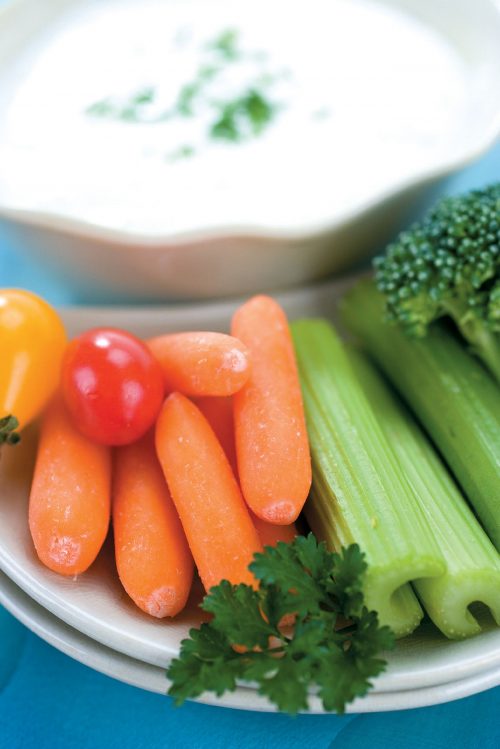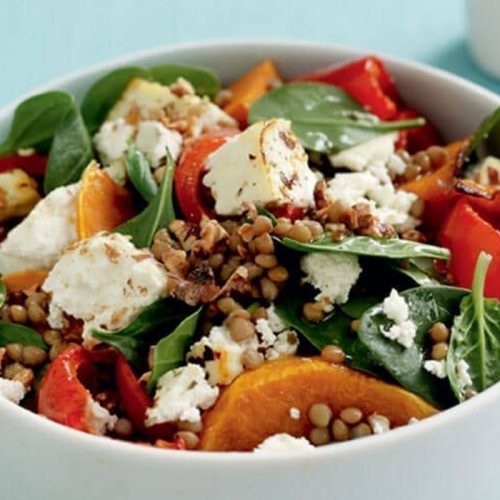
Vegetable side dishes and salads produce significant improvements to the waistline and cholesterol levels, and are a healthy and inexpensive way to fill your plate.
I know we're supposed to stop eating when we no longer feel hungry. But I like eating; really like it, so tend to eat until I feel comfortably (or sometimes uncomfortably) full.
I'm also aware of my health (okay, my weight) so my 'greedy girl's guide to eating' involves filling my plate with friendly foods. Tasty, healthy, lovely food that won't make me fat, sick or broke.
I eat lots of fruit and vegetables, a lot more than I did 10 years ago. Fresh, frozen or home-preserved fruit and vegetables reign supreme in our menu planning. In fact, one of the biggest benefits of having to watch what we spend in our household has been the realisation that including loads of seasonal food in our meals is the cheapest and (bonus) healthiest way to eat a hearty meal on a tight budget.
For reasons of economy, fresh artichokes and stuffed courgette flowers are not likely to be the vegetables du jour at Maison Gray on the average week night. We eat a lot of the readily available, all-year-round stuff; look forward to seasonal variations; and make the most of condiments like chutney and pickles, chargrilled capsicums and dried tomatoes to add flavour and interest.
An evening meal is built around a palm-sized serving of protein (the palm of the hand of the diner), a fist-sized serving of carbohydrate – rice, pasta, potato, bread – and generous servings of vegetables hot or cold. Vegetable side dishes, salads and fruit has produced significant improvements to the waistline (mine) and the cholesterol level (my husband). And the little people just assume that this is how everybody eats.
It's a healthy and inexpensive way to fill your plate so, if you want to spend less on groceries, serve more fruit and vegetables on the side.
Do
- Find interesting ways to serve vegetables. Boiled broccoli every night for a month is not a good way to win friends and influence people.
- Include frozen veges. Frozen stir-fry mixes and corn cobs are expensive compared to fresh, but frozen peas and beans are brilliant. Buy vegetables at the peak of the season and freeze your own.
- Add a salad. Grated carrot and apple make a good base when lettuce is expensive, or try a selection of sprouts as a base. Develop a range of coleslaws using red and green cabbage and apple but use yoghurt or half yoghurt and half mayonnaise instead of regular mayonnaise dressing.
- Offer raw vegetables. Serve carrot, celery and capsicum strips to dunk in the satay sauce or salsa or Tzatsiki.
- Use the barbecue. Bored with boiling and steaming? Brush veges with garlicky olive oil and barbecue.
- Present it nicely. Use little dishes and cups, baskets and ramekins.
- Take note of what is in season. Peak of season produce is the freshest, tastiest and cheapest food around, so eat lots of it while the season lasts and store the surplus as home preserves. Try chutney, bottled fruit in light syrup, pickles, sauces, etc.
- Grow your own. Lettuces and fresh herbs will grow in a bag of compost: poke holes in the bottom of the bag for drainage, cut crosses into the top of the bag and scoop out little planting holes. Plant with cut and come again' varieties of lettuce, plant potted 'living herbs', etc and position in a sunny spot – on the deck, back steps, even in the wheelbarrow. Water every day and enjoy. Grow cherry tomatoes and courgettes in large pots; use a liquid fertiliser to ensure optimum nutrition and position in a sunny spot.
- Eat your colours. Purple (beetroot, aubergine, purple cabbage, purple asparagus), red (radishes, red kumara, tomatoes, red peppers), orange and yellow (carrots, pumpkin, kumara, yellow and orange peppers), brown and white (mushrooms, garlic, potatoes, onions, parsnips, swede), and green (asparagus, broccoli, beans, peas, salad greens, cabbage, cress, spinach).
Don't
- Buy extra vegetables unless you are actually going to use them. It's no use stocking up if it's all going to end up in the compost a week later.
- Get too heavy with sauces. Allow the vegetables to taste like themselves.
- Avoid something just because you didn't like it when you were eight. Our taste for fresh food is developed over our lifetime, continually try new flavours – you may be surprised what you find you like.
- Don't assume the kids won't like it. Chances are they'll believe you.
Recipe idea
www.healthyfood.com










